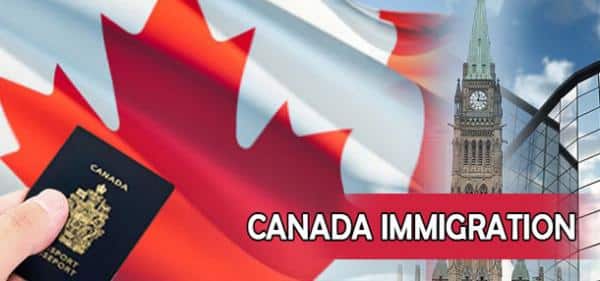
“Oh, Canada” is a refrain more U.S. companies, high-skilled foreign nationals and international students are listening to in response to more restrictive immigration policies in the United States.
The Trump administration has made it more difficult for international students to stay or work in America and new international student enrollment at U.S. universities declined over 6% in the 2017/2018 academic year, while Canadian universities are attracting international students at record levels. The number of international students in Canada increased 16% in 2018, after rising 20% in 2017.
It’s not just international students choosing Canada. “Sixty-three percent of employers surveyed in the Envoy study are increasing their presence in Canada, either by sending more workers there or by hiring foreign nationals there,” reported the technology news outlet Recode. “More than half of those did both. Another 65% of hiring professionals said Canada’s immigration policies are more favorable to U.S. employers than U.S. policies. Of those surveyed, 38% are thinking about expanding to Canada, while 21% already have at least one office there.”
To better understand the Canadian immigration system and what may be attracting U.S. businesses, I interviewed Peter Rekai, founder of the Toronto-based immigration law firm Rekai LLP.
Stuart Anderson: Is it your experience that U.S. companies frustrated with current immigration policies are moving more people and resources to Canada?
Peter Rekai: Definitely. Canada is becoming a destination for high-skilled foreign workers who can’t get new or extended status in the United States. Sometimes U.S companies just “park” these workers in Canada, hoping to get them eventually into the United States. However, many other U.S. companies have opened affiliates in Canada to which they are transferring their foreign workers on a long-term basis.
While a number of such “tech refugees” regret that they cannot stay in Silicon Valley, those with families appreciate that in Canada their spouses can get “open” work permits, their children can go to public schools and the family will be covered by universal public healthcare. They also appreciate that a clear path to permanent residence (and ultimately citizenship) is available to them, likely after a year of working in Canada.
Anderson: H-1B visa cases filed without premium processing can take U.S. Citizenship and Immigration Services 6 to 12 months to complete. What’s processing like for the equivalent temporary visas in Canada?
Rekai: The federal government’s new Global Skills Strategy has facilitated hiring and accelerated the processing of high-skilled workers. The goal is to get all high-skilled labour-market exempt workers to Canada and to their respective employers within 2 weeks (2 weeks longer if a labour market approval is required). Employers of low- to medium-skilled workers seeking labour market approvals face longer processing periods (currently between 3 to 9 months).
Anderson: Is it accurate to say Canada has made it easier for businesses in recent years?
Rekai: Yes. The government has expanded the number of categories of work permit categories that exempt employers from having to go through the cumbersome labour market approval process to obtain permission to hire a foreign worker. Some of this expanded mobility for professionals and business people has been due to the signing of new free trade agreements with nations in the Americas, the Pacific and the European Union.
Anderson: Can you explain how permanent residence, the equivalent of a U.S. green card, operates in Canada for business immigration?
Rekai: Economic immigrants account for 50% to 60% of all applicants for permanent residence in Canada. Their eligibility is largely determined by a “points system” based on a “human capital” model that rewards youth, education, skilled job experience and sophisticated English or French language skills.
Generous “points” are accorded to those with skilled work experience in Canada and to holders of Canadian post-secondary diplomas and degrees. This effectively establishes a path to permanent residence for currently employed skilled temporary foreign workers, ensuring that most of Canada’s new economic immigrants are already gainfully employed by the time they become permanent residents. This “path” to permanent residence also underlines the significant role played by Canadian employers, who initially choose the temporary foreign workers.
Anderson: You’ve noted before that it could be dangerous to import the Canadian points system wholesale into the United States because Canada’s system works because it’s flexible and responds to employer needs but that type of “flexibility” in the wrong hands could be disastrous for U.S. employers.
Rekai: Putting broad immigration decision-making into the hands of a strong executive can lead to “be careful what you wish for” outcomes. An ideologue in an empowered U.S. executive branch (e.g., White House aide Stephen Miller) could significantly change the focus of U.S. immigration through executive order or action.
As I’ve noted previously, if the United States adopted the same immigration system as Canada, then the president of the United States, via the Secretary of Homeland Secretary, could set the level of legal immigration in a given year at zero, 500,000 or 5 million, whichever level he prefers. In addition, the president through his designee could establish or eliminate entire categories of immigrants and decide on the number of immigrants in each category, or do the equivalent when deciding the overall point level or which characteristics get points at all.
Anderson: It seems to Americans that Canada has historically avoided the same level of political divisiveness over immigration that we have seen in the United States. Is that a correct perception?
Rekai: Not entirely. Being bounded by 3 large oceans and sharing our only land border with the most affluent nation in the world has allowed Canada to avoid the immigration stresses imposed by large movements of asylum seekers and economic refugees. This has permitted Canadian governments to pursue a more orderly immigration process within controlled borders.
Canada pursued a largely white European-based immigrant selection process until the advent of the “points system” in the mid-1960s, which democratised and globalised our immigrant selection.
Canadian governments, Conservative and Liberal, over the past few decades have all been keen supporters of steadily raising immigration levels as an economic tool, with an emphasis on attracting skilled immigrants. Currently, our annual immigrant intake represents 1% of our population and, on a per capita basis, is 3 times that of the United States. However, our governments have been cautious to avoid any sudden boost in numbers so as to preserve the positive but delicate Canadian pro-immigration consensus.
Anderson: What do you think is the biggest weakness for businesses or employment-based immigrants in the Canadian immigration system?
Rekai: On the high-skilled worker side, the current points system, which the Minister of Immigration has the power to adjust at will, tends to be too tough on mid-career applicants, who are likely to be more accomplished and experienced in their occupational fields than their younger counterparts. Applicants under the federal selection programme start losing “points” in the age category after the age of 30, making them less competitive.
The heavy emphasis of the Canadian points system on post-secondary education, as well as its emphasis on those with offers of long-term full-time employment, has made it difficult to attract trades that are considered valuable in the workplace, particularly construction workers, such as carpenters, bricklayers, electricians, etc. The more recent establishment of a designated “trades stream,” which de-emphasizes post-secondary degrees and acknowledges that employment in the construction industry is based on shorter-term projects, has served to create an opening for trade applicants, although it’s too early to determine its success.
The Canadian system also features a partial outsourcing of economic immigration selection to the provinces. Regional employers have input in selecting immigrants with particular skills that are needed locally, including allowing for the selection of certain low-skilled workers (e.g., meat cutters needed by food processing plants in Manitoba and Saskatchewan, and long-haul truckers in Alberta).
Anderson: Why is Canada good for international students?
Rekai: International students who graduate from (at least) 2-year programmes at Canadian colleges and universities, in any field, are eligible for 3-year open work permits. Typically, graduates with a Canadian post-secondary credential will be young, communicate well in English or French and have gained one or more years of Canadian skilled work experience pursuant to their post-graduation work permits. This makes them competitive applicants under the points-based economic permanent resident selection process.
The knowledge that there is a clear “studies to work to permanent residence” path has significantly increased the number of international students coming to Canada, with many choosing Canada over attending U.S. schools for this reason.
Anderson: Do you think if U.S. policymakers don’t make it easier to hire and retain high-skilled foreign nationals in America that more U.S. companies, immigrants and international students will be coming to Canada?
Rekai: High-skilled foreign nationals will continue to find a reliable path to permanent residence in a relatively short period of time in Canada. Absent changes in U.S. immigration policies, I would expect companies, immigrants and international students to continue to see Canada as an attractive alternative to the United States.
By
Source- forbes.com







